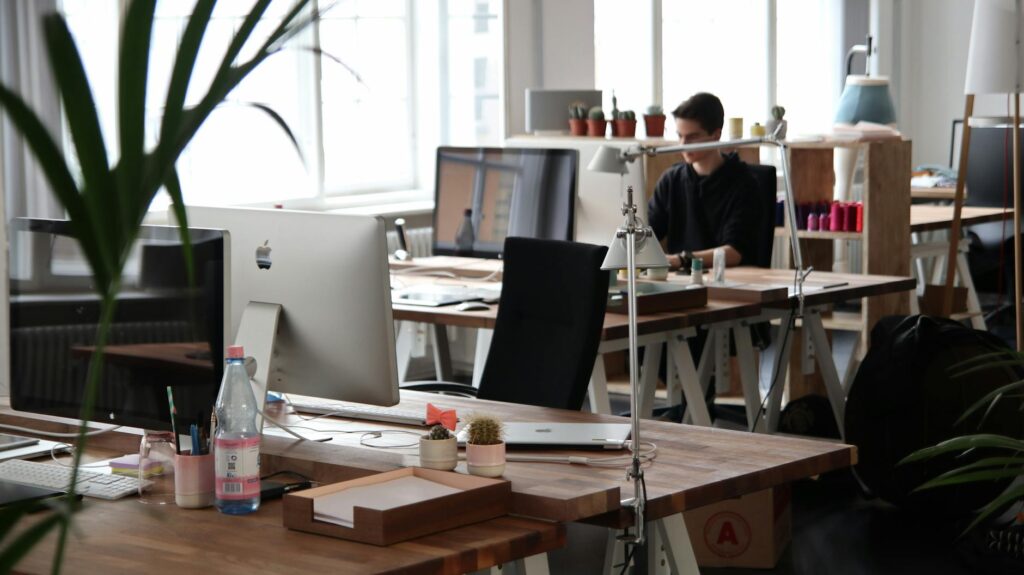What is productive workspace setup?

What is productive workspace setup?
Creating a productive workspace setup can significantly enhance focus, efficiency, and even well-being. Each element of our environment influences how we feel and perform, whether at home or in an office. When we think of productivity, we often picture a tidy desk, the right gadgets, and a comfortable chair. But it goes much deeper than that. Let’s explore how to design a workspace that truly works for you.
Understanding Productive Workspace Setup
A productive workspace setup refers to the way your work area is organized and designed to maximize your efficiency and comfort. This setup isn’t just about aesthetics; it’s about creating an environment that fosters concentration, creativity, and productivity. Studies have shown that a well-designed workspace leads to better work performance and overall satisfaction.
The Psychology of Workspace Design
Workspace design plays a crucial role in how we feel and perform at work. For instance, an open layout can stimulate collaboration, but too much noise can serve as a distraction. On the other hand, private spaces may enhance focus but can feel isolating over time. Understanding these dynamics can help you create a balanced workspace.
For more insights into how design impacts workplace behavior, check out The Psychology of Workplace Design.

Photo by Marc Mueller
Key Elements of a Productive Workspace
Creating a productive workspace involves several key components that work together to enhance your environment.
Ergonomics and Comfort
One of the most important aspects of a workspace is ergonomics. The furniture you choose can have a direct impact on your focus and productivity. An ergonomic chair and desk can help you maintain good posture, reducing strain on your body. Remember, comfort leads to concentration.
For tips on enhancing your workspace ergonomics, you might find this guide useful.
Organization and Clutter Management
A cluttered workspace can be a significant distraction. Keeping your desk organized not only helps you find what you need quickly but also promotes a clear mind. Use organizers, shelves, and labeled files to manage your materials. Consider practicing the “one in, one out” rule to limit clutter.
Lighting and Ambiance
Lighting is another critical component. Natural light can boost mood and energy levels, while harsh fluorescent lights can lead to fatigue. If you don’t have access to natural light, consider investing in adjustable LED desk lamps that mimic daylight. A well-lit space can be invigorating and can significantly enhance your productivity.
Check out this article on 10 Best Home Office Setup Ideas for Productivity for more tips on optimizing your workspace.
Personalization and Customization
Your workspace should reflect who you are. Personal touches can inspire creativity and make your workspace more inviting.
Incorporating Inspiring Decor
Adding personal decor like photos, art, or plants can create an environment that feels uniquely yours. These elements can lift your spirits and motivate you throughout the day. A little greenery can also help improve air quality and reduce stress.
Using Technology to Enhance Productivity
Technology can streamline your workflow. From task management software to productivity apps and automation tools, the right technology can save you time and increase efficiency. Consider integrating tools like Trello, Asana, or even simple timers for the Pomodoro Technique to keep you on track.
Tips for Implementing a Productive Workspace Setup
Now that we’ve covered the basics, how can you start creating your own productive workspace?
Assessing Your Current Workspace
Take a moment to evaluate your current workspace. What’s working for you? What’s causing distractions? Identifying these factors is crucial for making meaningful changes.
Creating a Regular Maintenance Routine
To keep your workspace effective, develop a routine for maintenance. Dedicate time each week to declutter, reorganize, and refresh your space. This will help you maintain a productive environment in the long run.
Conclusion
A productive workspace setup is more than just a nice desk and a comfy chair. It encompasses ergonomics, organization, lighting, personalization, and the right technology. By taking the time to assess and improve your environment, you can significantly enhance your focus, efficiency, and overall well-being. So, why not take action today? Start transforming your workspace into a sanctuary of productivity!